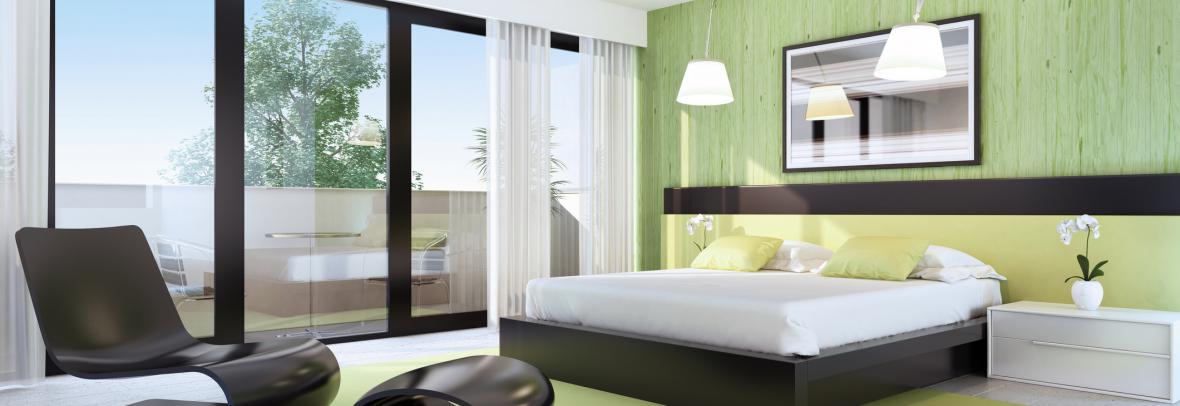
Staging Homes With Neurodiversity in Mind
Make your listings inclusive by connecting with buyers of all backgrounds and being mindful of your design touches. Focus on calm, functional spaces.
CHICAGO — Neurodiversity is an umbrella term for the natural differences in how people’s brains process information, think, learn and experience the world around them. It includes a wide range of neurological conditions such as autism, ADHD, Tourette’s syndrome and various learning disabilities, including dyslexia and dyscalculia.
With nearly 20% of American adults identifying as neurodivergent, real estate professionals and home stagers should be considerate of how it feels for every client to experience the sights, sounds and navigation within a home.
By making thoughtful, strategic design decisions, you can minimize potential stress triggers for the neurodivergent population.
How to stage an inclusive listing
Those who identify as neurodivergent tend to value the same fundamental elements as neurotypical buyers – calm, functional spaces that feel intuitive and safe. But you can make that theme more prominent with a few extra considerations in your home staging.
1. Use calm, muted color palettes
Color powerfully influences mood and perception. Research shows that bright, high-contrast hues or clashing patterns can overstimulate people with autism or sensory processing differences.
A good hue to choose? Studies consistently point to green as a calming color that connects people with nature, promoting tranquility and focus. Blues and muted earth tones also tend to be well-received and can help reduce visual agitation.
For home staging, consider accent walls in sage green, pale blue or warm taupe. Avoid overstimulating colors like bold reds, neon yellows or heavily patterned wallpaper. Instead, incorporate soft-toned wood furniture and textured textiles – like linen or cotton – to create a grounded, inviting atmosphere that feels peaceful yet balanced for every visitor.
2. Create clear, simple room layouts
There’s a reason open-concept layouts continue to be in demand among homeowners. Cluttered or confusing layouts can be stressful for many buyers, particularly those who thrive on structure and clarity. People with neurodivergent traits may be more sensitive to busy environments. A straightforward layout keeps it more manageable.
As such, just like in traditional staging, keep rooms open and logical. Consider setting up specific zones for relaxing, working and eating that allow guests to create mental maps of the space, which is especially helpful for people with memory challenges like early dementia.
Avoid over-decorating. Instead, use rugs, lighting or subtle furniture placement to visually separate spaces without overwhelming the senses.
3. Layer lighting thoughtfully
Lighting matters more than you might think, especially for neurodivergent clients. People with autism and other sensory sensitivities can be especially reactive to lighting. Harsh ceiling spotlights, cool fluorescent bulbs or flickering LEDs may feel overwhelming or physically uncomfortable. On the flip side, excessively dim rooms can trigger anxiety or disorientation for some.
Opt for layered lighting—instead of relying on a single, bright source. Combine ambient, task and accent lighting so potential buyers can experience the space comfortably. Use warm-toned LED bulbs, floor and table lamps, and dimmable switches wherever possible to offer flexible control over brightness.
Don’t forget the power of natural light. Open the blinds during showings. Daylight supports well-being and can even trigger the release of serotonin, creating a more positive association with the property.
4. Use noise control features
Sound sensitivity is another common experience in the neurodivergent community. Common sounds that neurotypical people might ignore, like a humming refrigerator or echoes in a bare hallway, can be overstimulating to others. A house’s quiet setting can be a significant selling point.
You don’t need to go as far as soundproofing the home, but acoustic consideration makes a difference. Wool rugs are good at muffling noises. Cushions and wall art can absorb sound and also help soften the atmosphere. Stage rooms with potted plants near windows and in particularly noisy areas to help improve acoustics.
5. Design for flexibility, not stereotypes
Neurodivergence is a spectrum, not a monolith. Your potential buyers’ preferences may differ significantly. For example, someone with autism might prefer calm, low-stimulation environments, while a person with ADHD may thrive in spaces that offer subtle sensory engagement.
Rather than designing for a diagnosis, focus on universal comfort. The goal is to create an organized, welcoming and adaptable space that appeals to everyone, regardless of how their brains work. After all, feeling at ease in a home is a universal human desire.
© 2025 National Association of Realtors® (NAR)
